With 2015 marking the second season of Formula One racing’s new hybrid era, tyre suppliers Pirelli are now highly familiar with the revised demands that the latest cars place on their rubber. But like with any part of F1 competition, that does not mean things are standing still for the Italian company. We caught up with motorsport director Paul Hembery to get his take on the current state of play…
Q: Paul, two years ago tyres were big news and Pirelli were all over the media. Now it is pretty quiet. Does that mean everything is going well? And which do you prefer?
Paul Hembery: Ha, we still get a lot of comments - people expressing their pleasure that we see more movements and a bit more predictability (with the tyres). We’ve seen a massive technological change in the sport since 2014 and the focus, very rightly, has been on different aspects of the performance. I think we have a good balance at the moment. Has life become easier now that we’re not the ‘bad boys’ to that extent anymore? There is always somebody complaining… But don’t get me wrong, we do our job well and keep an eye on the ball, as this sport is changing rapidly. We must not become complacent. But in the end we are limited in what we can change because of the lack of testing. So even if we see something that in an ideal world we would love to change, we stay put.
Q: Up until 2013 it was often the tyres that decided races. Now it seems it’s the power unit. Are tyres no longer important?
PH: Bear in mind when we came to the sport the regulations had been very stable - that was a different challenge. Now with the regulation changes the challenge has become a different technical aspect. We’ve taken us slightly back so that we are not at the forefront. In some ways we had to change our product because the cars have changed: they have more torque, more wheel spin - and they started going quicker, even though sometimes we see races that are not as quick as we had anticipated.
Q: What developments have there been for this year, now that the new power units have bedded in?
PH: It meant for us that we were going a bit unto the unknown. We had some good pre-season testing last year in hotter conditions in Bahrain, which gave us a very good early indication of how the power train works with the tyres - with very good results, as we’ve changed very little for this season. We’ve just made some changes to the rear tyres to balance out even further the wear and the heat build-up. So 2015 is more evolution than revolution.
Q: Seeing the three 2015 rookies doing so well so far, some have suggested that less-experienced drivers find it easier to adapt to the current breed of car than the more-experienced drivers did - does that also apply for the tyres? That car and tyres are easier to handle these days?
PH: If something is easy to drive and the tyres are touching the ground, this must mean that the cars use the tyres in such a way that the driveability is easier. But we still do see the cars sliding around. But I also know the comments from the drivers: they like a bit more of a challenge - and that is, of course, in the minds of the Strategy Group when they are looking forward to 2017.
Q: How could the tyres add further to the excitement?
PH: We’ve been asked to look into making wider tyres - the kinds of tyres of 20 years ago. That would be dramatic in terms of appearance and would mean that more grip comes from the tyres - so my understanding is that the Strategy Group are looking into less aero. What they are planning with the power trains, I don’t know.
Q: So could tyres become more important again?
PH: Probably only in places where it is really hot - like Malaysia - where we probably see chassis differences and the tyres taking on more strategic importance.
Q: In terms of making for closer racing, tyres are no doubt an important ingredient - as you rightly said, they are the one component to touch the ground. So what could be Pirelli’s contribution?
PH: Look at 2012: at the opening seven races we had seven different winners - that had never happened before and that was exciting! That was because we had an approach with the tyres that was very difficult to master. We put ingredients in the tyres that made the operating window very narrow - on purpose. This created a huge technical challenge for teams and drivers.
Q: What about Force India boss Vijay Mallya’s suggestion to let the teams choose the tyre compounds they want to use?
PH: If we weren’t supplying the tyres I would say yes. But we make our tyre choices based on a lot of data - looking at the individual circuits and their surfaces - and looking at all the ten chassis. And we wouldn’t want somebody else taking that out of our hands because you could end up having some safety issues.
Q: Are Pirelli happy with their F1 involvement? Before Pirelli were a respected Italian tyre manufacturer - now they are known globally…
PH: We are a global business - and we are happy with our involvement with Formula One. But 2017 [Pirelli’s current contract expires at the end of 2016] is a while away and we have to still be confident that the sport is going forward - and still offers the same level of return. For us it is a pure business decision - not an emotional one.
Next Up
Related Articles
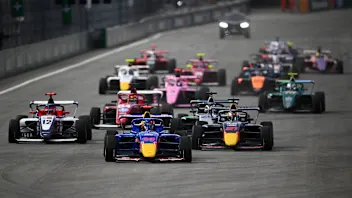 F1 ACADEMY unveils calendar for 2026 season
F1 ACADEMY unveils calendar for 2026 season Sainz hopes point-less finish in Abu Dhabi ‘serves as a wake-up call’
Sainz hopes point-less finish in Abu Dhabi ‘serves as a wake-up call’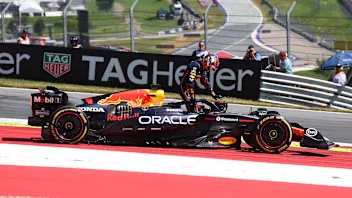 ‘I hated this car at times’ – Verstappen on his 2025 season
‘I hated this car at times’ – Verstappen on his 2025 season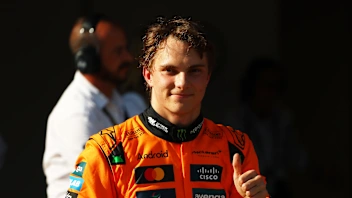 Piastri reveals lessons that will ‘only make me stronger’
Piastri reveals lessons that will ‘only make me stronger’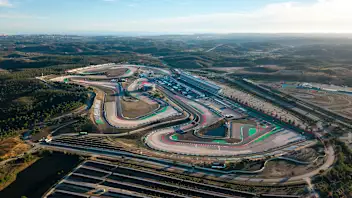 Formula 1 to return to Portugal in 2027 and 2028
Formula 1 to return to Portugal in 2027 and 2028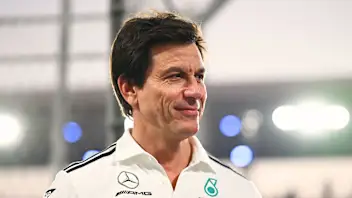 Wolff calls Abu Dhabi ‘mediocre’ but ‘pleased’ to finish P2
Wolff calls Abu Dhabi ‘mediocre’ but ‘pleased’ to finish P2